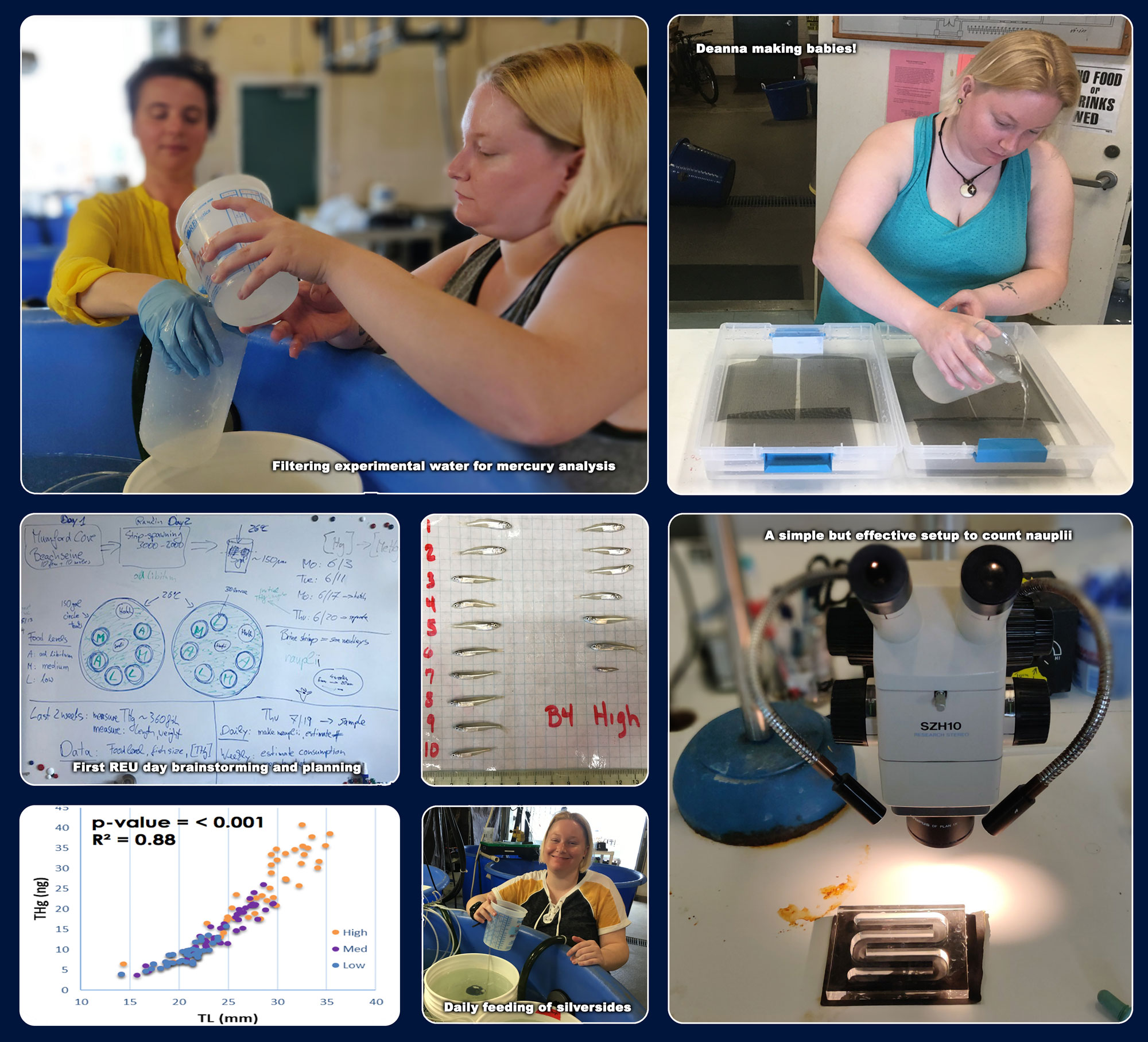10 August 2019. Deanna Elliott from Arizona State University has just successfully completed her summer research project as our third NSF-REU student. For her REU-project she reared Atlantic silverside larvae under different feeding regimes to create fish of different body sizes and then analyzed them for trace levels of mercury in their tissue. She tested the hypothesis that mercury concentrations in fish can be used as a proxy for ingestion rates, which are important to trophic ecosystem models to perform better.
Here’s what Deanna had to say about her REU research experience:
This summer, I spent 10 weeks in the Baumann Evolutionary Fish Ecology lab and had a blast! The entire lab was incredibly welcoming, and made me feel at home immediately. We jumped right into my project and I had so many new experiences, it was almost overwhelming. We went seining for silversides in Mumford Cove, fertilized fish eggs… I became a Fish Mommy for the first time, rearing approximately 500 juvenile silversides for five weeks—I had never even had a fish tank before! I also got valuable experience in the chemistry lab, analyzing the mercury content of my Fish Babies. I felt very welcomed and received a lot of encouragement on my project and the presentation I had to give at the end of the program. Hannes and Zosia especially made me feel appreciated and supported, and that made all the difference in my experience with UCONN’s marine biology REU.
Check out some of the impressions from Deanna’s time at UConn. Great job, Deanna!



